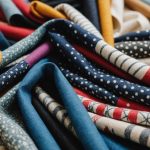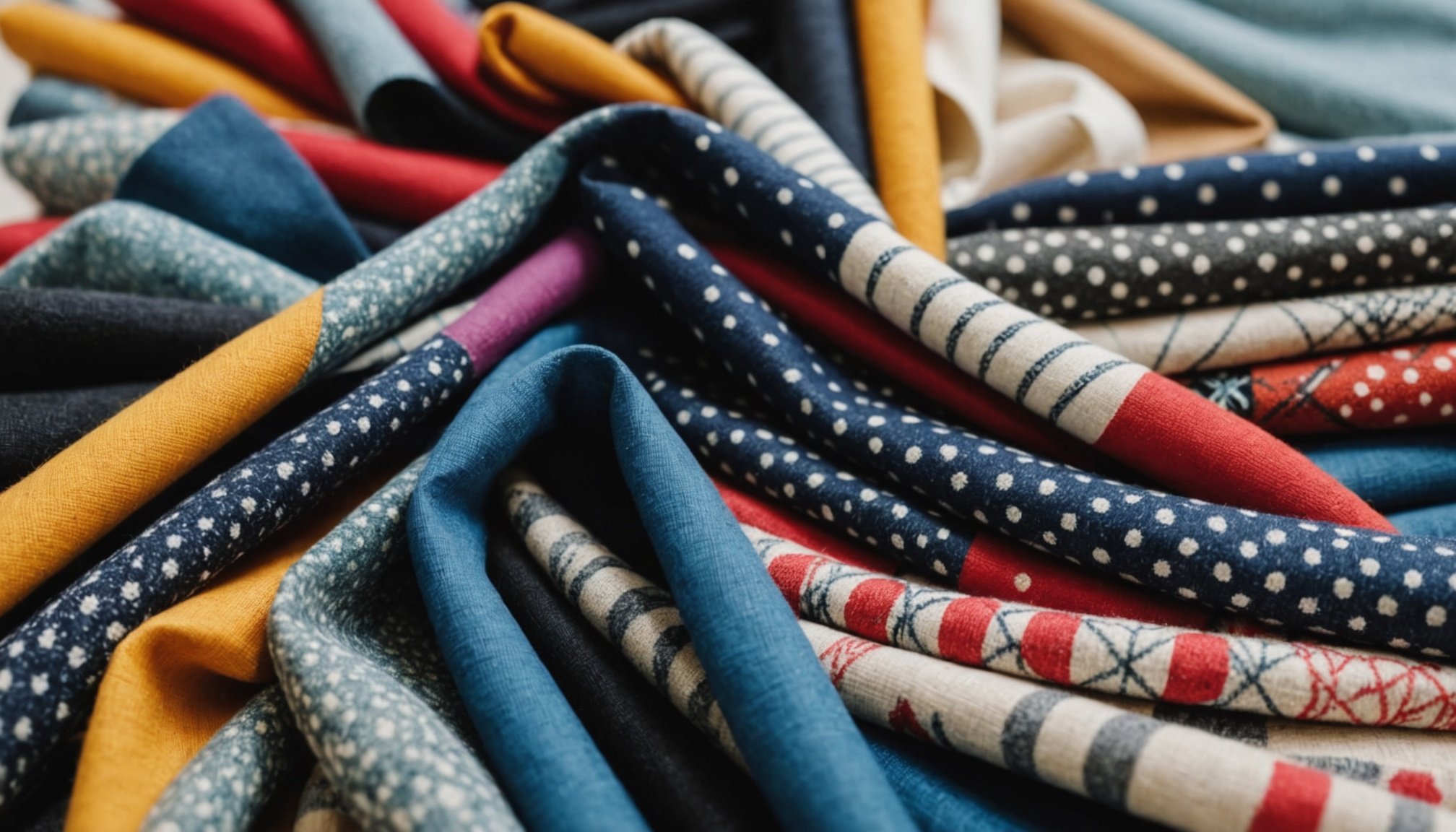Understanding the UK Climate and Its Impact on Fabric Selection
The UK climate is known for its variability, which plays a crucial role in the choice of fabric for both fashion and practical applications. The region experiences distinctive seasonal variations, with each season presenting unique weather challenges. Summers can be mild and warm, while winters are generally cool to cold with frequent precipitation. This range in weather conditions necessitates versatile fabric choices.
Humidity, temperature, and precipitation significantly influence fabric selection. The UK’s relatively high humidity may lead to discomfort if non-breathable fabrics are worn. Therefore, breathability and moisture-wicking properties are highly valued. These characteristics ensure comfort by allowing air circulation and drawing moisture away from the body, keeping the skin dry and cool.
Also read : Effortless Spring Chic: Expert Tips for Styling Your Denim Jacket in the UK
Fabrics with moisture-wicking capabilities are particularly beneficial during the UK’s transitional weather periods when conditions can shift unexpectedly. Understanding the interaction between fabric properties and weather conditions can help in making informed decisions about which materials will provide the best performance and comfort throughout the year. Selecting the correct fabric based on climatic needs can enhance the functionality and longevity of garments, ensuring they are both suitable and sustainable for the diverse UK climate.
Key Fabric Types for DIY Fashion Projects
Exploring the world of DIY fashion projects opens up options in both natural fibers and synthetic fabrics. Each fabric type brings unique characteristics, advantages, and considerations, shaping their role in various designs.
Also to see : Polish Your Professional Look: Top Strategies for Mastering the Pencil Dress in Manchester
Natural Fabrics
Natural fibers such as cotton, linen, and wool offer notable breathability and comfort. Cotton is soft, breathable, and perfect for summer projects. Linen, known for its airy texture, is ideal for warmer months. Wool, on the other hand, provides excellent insulation against the cold, making it suitable for winter garments. These qualities of natural fabrics ensure comfort across diverse weather conditions.
Synthetic Fabrics
Synthetic fabrics like polyester and nylon are cherished for their durability and low-maintenance nature. Polyester offers water resistance, making it ideal for outdoor gear and accessories. Nylon is known for its strength and elasticity, perfect for activewear or versatile fashion pieces. While synthetic fabrics excel in rough usage, they may lack the moisture-wicking properties found in natural fibers, demanding thoughtful design application in fashionable DIY projects.
Selecting the right blend between natural and synthetic textiles can elevate your DIY fashion creations, ensuring both style and practicality.
Seasonal Fabric Recommendations
In the ever-changing UK climate, selecting the right fabrics for each season ensures comfort and functionality. Spring and summer call for lightweight, breathable materials due to the warmer temperatures. Opt for fabrics like linen or cotton, which are known for excellent air circulation and absorbency. They help keep you cool and dry, essential for the milder climates.
As temperatures drop into autumn and winter, the focus should shift to warmth and insulation. Wool stands out for its ability to retain heat, making it a top choice for cold weather. Additionally, materials like polyester offer water-resistant qualities, crucial for maintaining warmth and dryness during wetter seasons.
For transitional weather, fabrics that strike a balance between light and insulating are ideal. Mixed fabric blends can be particularly effective in adapting to the unpredictable weather conditions often encountered in the UK, providing comfort despite sudden shifts in temperature or humidity levels.
Choosing appropriate fabric recommendations helps in crafting outfits that are temperature-appropriate and seasonally versatile. This informed approach not only supports comfort year-round but also encourages thoughtful planning in creating practical and stylish seasonal fashion pieces.
Eco-Friendly Fabric Choices
Choosing sustainable fabrics is an investment in both the environment and the future of fashion. Eco-friendly options like organic cotton and hemp present an alternative to traditional fabric types, emphasising their low environmental impact.
Organic cotton is grown without harmful chemicals, making it a healthier choice for both the earth and the wearer. Its breathability and softness ensure comfort, ideal for everyday wear. Hemp, known for its durability, becomes softer with each wash and provides a natural resistance to UV rays. It thrives without pesticides, showcasing its sustainability.
Incorporating these eco-friendly materials into DIY projects not only supports ethical values but also enhances the quality of the fashion pieces created. The benefits include reduced water usage and lower carbon footprints compared to conventional fabrics, aligning with the growing demand for ethical fashion.
For those seeking to align their craft with their values, sourcing ethical materials is key. Organisations dedicated to sustainable practices often offer resources and guides for finding these textiles. Whether through online marketplaces or local fabric shops, there are plenty of opportunities to embrace an eco-conscious approach in your next sewing endeavour.
Tips for Fabric Selection and Sourcing
Selecting the right fabric for your fashion projects is crucial for achieving the desired quality and aesthetic. Here are some important guidelines to follow:
When evaluating fabric in-store, feel the material for softness and flexibility. For online shopping, check detailed descriptions and reviews to ensure accuracy. Pay attention to the weight and breathability, which are key indicators of how suitable a fabric is for particular projects.
For purchasing fabric, visiting a store provides the tactile experience of touching and testing the fabric. Online shopping, however, offers a broader range of options, often at competitive prices. When buying online, consider requesting samples to verify texture, weight, and colour.
Whether you prefer in-store or online shopping, the UK boasts a rich market for textile enthusiasts. Recommended UK fabric shops include Liberty London for trendy and luxurious fabrics, while online platforms like Minerva offer an extensive selection for various needs.
Collecting detailed knowledge about a fabric’s properties through careful selection and sourcing techniques ensures it aligns perfectly with your project goals, enhancing both practicality and design.
Project Ideas and Inspiration
Embarking on DIY fashion projects can be a delightful journey of creativity and self-expression. Suitable for both beginners and more experienced crafters, these projects can range from creating simple casual wear to crafting seasonal accessories.
Casual Wear
Beginner-friendly projects often include garments like t-shirts or simple skirts, which allow one to explore different fabric types with ease. Opting for natural fibers like cotton or linen can enhance comfort and breathability, ideal for relaxed outfits. Mixing fabrics such as a lightweight cotton with a stretch knit can add unique elements to casual wear, ensuring both style and ease of movement.
Seasonal Accessories
Accessories offer a canvas for showcasing creativity and can be tailored to the UK’s seasonal shifts. Items like scarves, hats, and bags can be made from synthetic fabrics like nylon for durability and weather resistance or wool for warmth and texture during colder months. Employing a variety of fabric types not only adds diversity to each project but also aligns items with seasonal needs, providing both functionality and flair.
With imaginative sewing inspiration, DIY enthusiasts can craft memorable pieces that fuse practicality with personal style.
Visual References and Enhancements
In DIY fashion projects, fabric visuals play a crucial role in facilitating decision-making. Understanding how different materials look and behave is key to successful project planning.
Utilizing visual examples of completed projects can offer inspiration and insight into how fabrics perform in real-life applications. Photographs highlighting a fabric’s texture or drape can guide expectations and enhance the creative process. By examining images of previous works, creators can better anticipate outcomes and tailor their designs accordingly, ensuring both aesthetic appeal and functionality.
Additionally, collecting fabric swatches is an effective method to assess fabric properties before committing to large purchases. Touching and seeing these samples in various lighting conditions allows for a deeper understanding of colour nuances and material quality, supporting well-informed fabric choices.
For a more structured approach, creating a visual inspiration board can serve as a reference guide. This board might include swatches, style photos, and project sketches, compiling all visual cues in one place. It becomes a roadmap for the design process, aligning ideas with practical elements visually and effectively contributing to the journey from concept to creation in your DIY endeavours.






